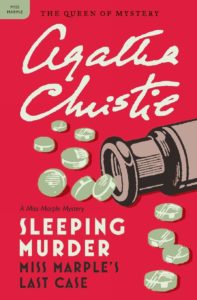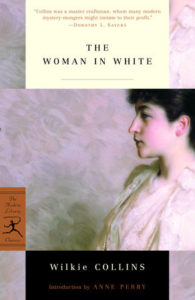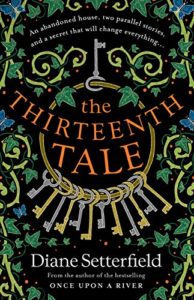Sibling relationships are the stuff of gothic novels. When characters have grown up together from childhood, breathing the same familial atmosphere and inheriting the same assumptions about life, there is always going to be potential for intensity and intrigue. The intimate bond that sisters and brothers share may be a blessing or a curse, but either way it is inescapable. In my own novel, The Whispering House, the central sibling relationship is fraught with anger and guilt, but the protagonist, Freya, cannot move on with her own life until the mystery of her sister’s death is resolved.
The gothic novels I’ve chosen here explore the deepest darkest possibilities of sibling relationships—from fierce protectiveness and exclusive friendship, all the way to murderous obsession and incest.

The Monk, by Matthew Lewis (1796)
The Monk was written when the gothic genre was in its infancy. The tale of Ambrosio, a devout monk who goes to the (very, very) bad, scandalised and enthralled its eighteenth-century audience by shattering every social convention. There are demonic rituals, murders, secret pregnancies, exorcisms, torture scenes, rapes—no holds are barred. As the story reaches its climax, the Devil himself puts in an appearance, and reveals that Antonia—the woman whom Ambrosio drugged, raped and murdered—was in fact his own sister. Even the Devil is disgusted, as much as to say violence is one thing, but incest? Sex between brother and sister is presented as the ultimate taboo.

Flowers in the Attic, by Virginia Andrews (1979)
The Dollanger siblings (themselves products of an incestuous union between their mother and her half-uncle) are treated as shameful secrets by their grandparents and locked away from the world. As they enter puberty the two eldest children, Cathy and Chris, grow physically attracted to one another, and in one particularly murky episode, Chris rapes Cathy, who subsequently forgives him and gives her belated consent. In the context of the story, incest—even incestuous rape—is not presented as proof of the children’s moral depravity, but as a symptom of their pitiful confusion and suffering.

Sleeping Murder, by Agatha Christie (1976)
(Spoiler alert!) At the denouement of this Miss Marple mystery, the reader learns that the victim—a young woman named Helen—was murdered by her brother in a fit of jealous rage, after she decided to leave her childhood home and begin an independent life with her husband. One of Christie’s darker whodunnits, Sleeping Murder explores the seamier extremes of the sibling bond, when a brother’s feelings for his sister tip into possessiveness and obsession.

The Little Stranger, by Sarah Waters (2009)
Never has the family circle felt more claustrophobic than in this gothic chiller, set in a crumbling mansion in post-war England. Roderick, mentally and physically scarred by his experiences in World War II, and his unmarried sister Caroline, are bound by ties of blood, affection, obligation, pity, habit and expectation. As if this weren’t enough, Hundreds Hall may (or may not) be haunted by “the little stranger” of the title: their sister Susan, who died in childhood. The sheer impossibility of escaping the past, the house and each other is horrifying.

The Turn of the Screw, by Henry James (1898)
When it comes to gothic novels, there are few tropes creepier than a creepy child, and they don’t come any more sinister than siblings Flora and Miles. Initially, the new governess is charmed off her feet by this angelic-seeming duo, but as the story progresses she becomes convinced that the pair are by no means as innocent as they look, and that they are, in fact, hiding horrific secrets from their past. One of the most chilling aspects of James’s novella is the exclusivity of the sister-brother relationship. The two of them inhabit a private world of their own, which even the most astute outsider will never be able to penetrate.

Florence and Giles, by John Harding (2010)
In this homage to Henry James, The Turn of the Screw is reimagined in 1890s New England, with twelve-year old Florence as the unreliable narrator. Florence and Giles’ self-sufficient and oddly contented existence is threatened on all sides by a hostile adult world, not least when the new governess, Miss Taylor, arrives and takes control. The power of the sibling bond is at the very heart of this novel and Florence—a shockingly ruthless, yet sympathetically imagined character—will do absolutely anything to protect it.

We Have Always Lived in the Castle, by Shirley Jackson (1962)
Yet another sibling-centred gothic classic that owes a debt to The Turn of the Screw. Merricat and Constance Blackwood try to isolate themselves from real life on their old, rambling country estate; meanwhile hostile rumours swirl about the nearby village, accusing Constance of murder. Shirley Jackson is brilliant at taking the reader inside the private world of the Blackwood sisters. Whatever crimes they turn out to have committed—and wiping out one’s entire family with an arsenic-laced blackberry dessert is, admittedly, a biggie—they somehow retain our sympathy. For the duration of the novel it’s them (and us) against the world.

My Sister, the Serial Killer, by Oyinkan Braithwaite (2018)
Sibling loyalties are tested to their maximum in this sharply comic take on the gothic novel, set in Lagos, Nigeria. When beautiful sociopath Ayoola develops a nasty habit of murdering her lovers, plain, sensible Korede feels duty bound to help cover up her younger sister’s crimes. The sisterly relationship is beautifully imagined: love and loyalty are part of the equation, yes, but there are equal measures of fear, resentment, jealousy and frustration. As the publisher’s blurb puts it, so concisely: “blood is thicker—and more difficult to get out of the carpet—than water.”

The Woman in White, by Wilkie Collins (1859)
During the course of this Victorian classic, Laura Fairlie discovers that she’s blessed with not one half-sister, but two. Marian Halcombe—intelligent, generous-hearted, heroic—is the sister she’s grown up with and loves, while eccentric Anne Catherick—her doppelgänger—is the sister she never knew. The startling physical similarity between Laura and Anne leads both women into danger and tragedy, but order is eventually restored thanks to Marian’s resourcefulness. A sister might spell doom, the book seems to say, but she might equally spell salvation.

The Thirteenth Tale, by Diane Setterfield (2006)
Twins are intriguing. Who (among non-twins) hasn’t wondered what it would be like to grow up alongside someone so similar yet so separate? Would it be bolstering? Constricting? A blessing? A curse? Faced with your twin, would you be facing your opposite or your mirror-image, or some uncanny combination of the two? No wonder gothic mysteries, from Edgar Allen Poe’s The Fall of the House of Usher onwards, have been fascinated by the dramatic potential of twin-hood. In Diane Setterfield’s novel, calm twin, Emmeline and violent twin, Adeline are presented as two halves of a whole. Together they form an eerie unit, subject to its own laws and repellent to outsiders.

The Woman in Black, by Susan Hill (1983)
The seminal tragedy of this gothic horror is a sibling relationship gone wrong. Mrs Alice Drablow adopts the child of her unwed sister Jennet Humfrye, insisting that the boy must never know the identity of his real mother. Jennet is allowed to stay at Eel House as a servant, which is how she happens to be watching from a window as the pony and trap carrying her son loses it way and sinks into the marsh. If Alice had not put respectability above compassion, for the sake of family pride, Jennet and her child would not have been parted, they would not have been living at Eel House, and catastrophe would have been averted. Sisterly cruelty is the Original Sin that sets events in motion.

Sister, by Rosamund Lupton (2010)
This wintry novel is a mystery in the traditional sense, as Beatrice searches for the killer of her sister, Tess. Even more compellingly, however, it is the elder sister’s quest to find out who her younger sister really was, and a coming to terms with the fact that Tess was a stranger, as well as a sibling. The novel takes the form of a letter to Tess, composed in Beatrice’s mind as she awaits her own death at the hands of her sister’s murderer. The letter is haunted by the presumptuous nature of the sibling bond. Just because we were born into the same family, it seems to say, you don’t necessarily know me, any more than I know you.


















